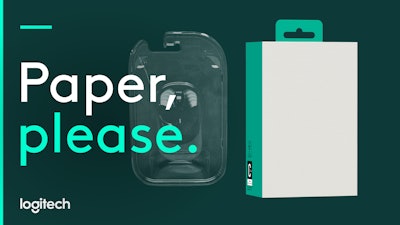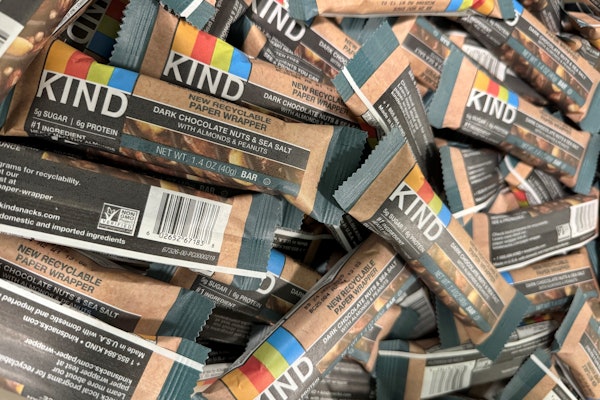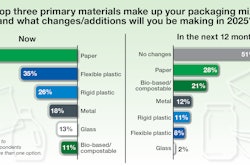
As part of an across-the-board effort to eliminate single-use plastics, computer peripherals and software company Logitech has nearly completed a transition from plastic clamshells to paper-based packaging for its hallmark computer mice, a move that will remove an estimated 660 tons of plastic and reduce 6,000 tons of CO2 emissions annually.
“Shifting away from plastic clamshell packaging marks a significant step toward our goal of completely eliminating single-use plastics from our portfolio,” says Delphine Donné, general manager of the Personal Workspace Solutions business group at Logitech. “This milestone is about 90% complete and is our largest packaging endeavor to date.”
According to Logitech Head of Packaging Bliss Buter-Thompson, Logitech’s shift to paper is part of a broader evolution in the retail landscape. “At one time, clamshell packaging was favored by customers and retailers because it allowed consumers to see the product, get a sense of its size, and feel confident about their purchase,” she says.
But as online shopping grew and environmental concerns intensified, Logitech recognized the need for a different approach. “The rise of online sales and environmental awareness prompted a transition to smaller, paper-based packaging,” Buter-Thompson notes. “Material innovations now provide product protection comparable to plastic, addressing the need for more sustainable options and consumer demand for accessible, lower-impact designs with clear graphics.”
 | Read this related article, “New HP Computer Packaging Cuts Plastic and Extra Space” |
Logitech’s new paperboard packaging reduces plastic to less than 1% by weight, retaining only minimal plastic laminates in the hang tab and binder. In comparison, the previous packaging consisted of approximately 60% plastic (PETG and recycled PET) and 40% paper-based material, found in the backer card and documentation.
“Using paper instead of single-use plastic enhances the customer experience by making packaging easier to open, visually appealing, and informative,” says Buter-Thompson. “At the same time, we can optimize the weight and size of the package and lower the product carbon footprint, all in alignment with meeting our customers’ needs.”
During the design process for the new packaging, Logitech’s engineering and design teams faced challenges in ensuring the new paper packaging would match the protective qualities of plastic. “Paper is a natural fiber and can be abrasive,” Buter-Thompson explains. “Our engineering team tested various papers for softness, flexibility, and strength, ultimately selecting the best material for each product.”
Logitech also considered a variety of concepts, including molded pulp trays that resembled thermoforms and triangular boxes inspired by premium chocolates. In the end, it opted for a traditional box design that Buter-Thompson says strikes the right balance between retail needs, product protection, carbon impact, cost, and ease of fulfillment and assembly.
Due to the new box format, the graphic design of the packaging required a change as well. Because the computer mice are no longer visible through the packaging, Logitech’s graphics team adapted by developing refreshed designs that clearly represent the products inside. “They ensured key features were clearly represented, integrating localized languages and designing refreshed, shoppable graphics,” says Buter-Thompson, adding that this update also allowed for more region-specific content, particularly tailored for Japanese consumers.
The construction of the new packaging varies depending on the mouse, but it typically includes a cellulose seal label, a paper hang tag, a paper bag, and a fiber-based insert. The materials for the bag and insert vary based on product and packaging requirements but are all made from natural fibers such as wood, bamboo, corrugated, paperboard, or pulp. Multiple box sizes were developed to accommodate different product dimensions and retail needs.
The transition is expected to be completed across Logitech’s mouse portfolio by the end of 2025, aside from a few lower-demand products and existing inventory already in the supply chain.
Beyond its mice category, Logitech has also made major strides in packaging reduction elsewhere. Since introducing its Single-Use Plastics Policy in 2021, the company has eliminated 1,800 tons of packaging material by rethinking packaging design.
“People increasingly value and actively seek out packaging that is less harmful to the environment,” says Buter-Thompson. “We are committed to designing packaging that not only protects the product, but also minimizes environmental impact and enhances the customer experience.” PW
























